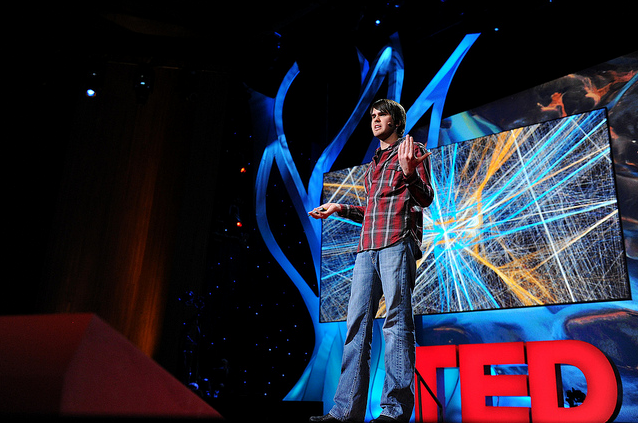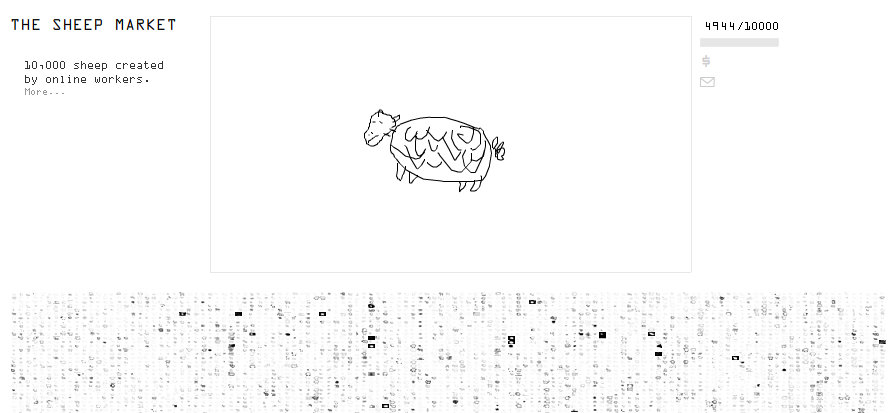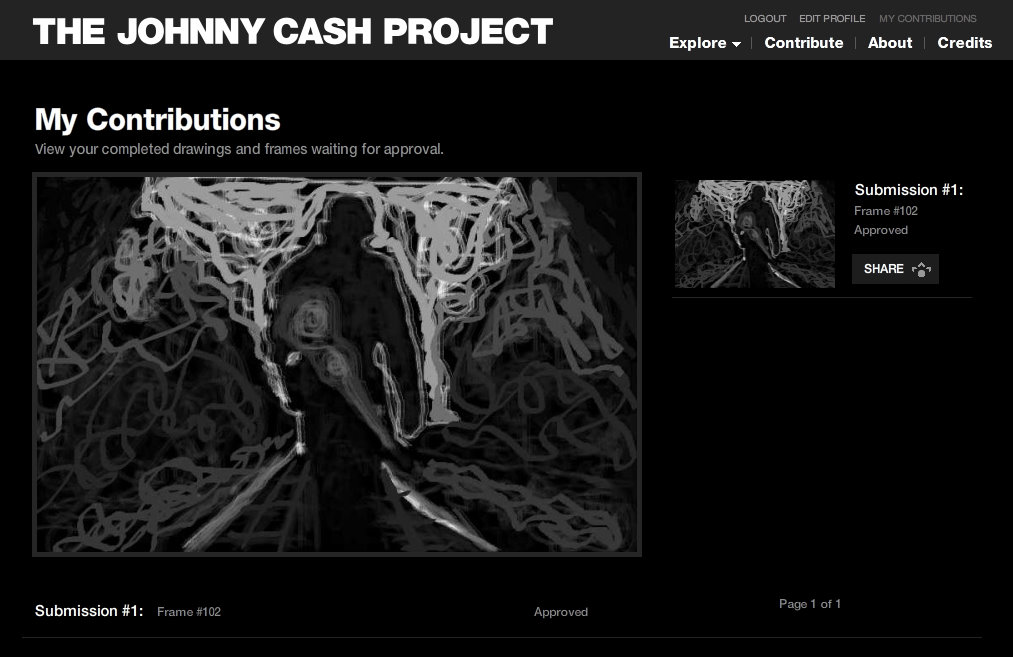Crowdsourcing Creativity
At a
TED talk earlier this year, Aaron Koblin, an artist “specializing in data and digital technologies”, began his talk by drawing attention to a tweet from a media theorist: “19th century culture was defined by the novel, 20th century culture by cinema, the culture of the 21st century will be defined by the
interface.”
I need this blank space
Now let’s deter ourselves from contemplating how we live in a world where tweets have become the new medium for philosophic aphorisms. Instead, let’s contemplate the interface, which means “a common boundary or interconnection between systems, equipment, concepts, or human beings.” Some thoughtful seconds later we can begin to comprehend the importance of the interface and how it has provided the world with numerous platforms for communication, the most important of them being the Internet.
Space
And this overwhelming ability to interact and communicate has given rise to another interesting phenomenon; crowdsourcing. Essentially, crowdsourcing is a means of relegating a specific problem or a task to members of the public and it provides access to something that was virtually impossible in the pre-Internet, pre-interface era; the collective brainpower of the wired world.
I need space
So what does a digital artist like Aaron Koblin create in the era of the interface? How does Koblin proceed when it dawns on him that he can explore the creative processes of the online world? He proceeds by surrendering his own paintbrush and easel but providing a whole host of individuals electronic canvases, paints, and paintbrushes; Koblin crowdsourced his art, he crowdsourced creativity.
Space
More specifically, he used the crowdsourcing capabilities provided by Amazon’s Mechanical Turk to create art. For his first project, Koblin created a drawing tool and paid people 2 cents to draw a sheep facing the left. And thus he began collecting sheep, drawings and drawings of sheep, 10,000 sheep. At the end of the project, he created a website called
thesheepmarket.com, where he sold a block of 20 sheep as a “one-of-a-kind plate block of lick-able adhesive stamps.”
Space
And technologically acute, brilliant artists, such Koblin do not crowdsource just once, they crowdsource again, and again. Some of his other incredible projects are
Ten Thousand Cents and a
Bicycle Built for Two Thousand, both of which demonstrate the extent and power of human collaboration made possible today, notwithstanding the lack of context and monetary gain.
Space
The most recent of his pursuits is
The Johnny Cash Project; “ a global collective art project”, where people from around the world can contribute to making the music video for the song,
Ain't No Grave, which was Cash’s final studio recording. In collaboration with a host of people, archival footage of Johnny Cash was used to create a video for
Ain't No Grave, which was then cut into several different frames. More specifically, the footage was cut into eight frames per second, leaving people with an ample number of frames for, albeit
mouse-driven, creative expression.
Space
As such, anyone anywhere in the world, could, and still can, re-create and render a frame from the footage using the drawing tools provided to them on the website. All of these frames become inter-weaved and form a final video homage to the great Johnny Cash that is cohesive yet disjointed, anonymous yet personal.
Space
Crowdsourcing, of course, is not limited to the field of artistic creation, for it can spark, even set ablaze, inspiration and innovation in almost any field. Earlier this year, we read about how an entire
opera production was crowdsourced! And ever since, the phenomena has only led to more sighs of delight, awe, and more recently, exclamations of eureka!
Space
The concept behind
fold.it, a website where users “solve puzzles for science”, is none other than that of crowdsourcing. An
article in the Smithsonian magazine takes note of some of the other organizations that have used crowdsourcing; NASA, Harvard researchers, and the European Space Agency. Yet another
article in the Washington Post mentions how the
Dead Sea Scrolls project by Google opens the door for “amateur detectives to seek clues that elude scholarly academics.”
Space
Even
museums can no longer hide, not even behind their impressive forest of columns in the Ionic order, from the phenomenon that is crowdsourcing. The Concord Museum in Boston recently celebrated its 125th anniversary with the exhibition titled “
Crowdsourcing a Collection”, which was “
curated by 25 selected individuals drawn from literary, arts, or political circles.”
Space
For arts organizations, crowdsourcing is a innovative way to engage, communicate, interact, and participate with your audience. So when faced with a vexing problem or task, why defer from asking the wired world to aid and guide you? If you were waiting for a call from the savvy technological beyond, here it is; crowdsource creativity, crowdsource innovation.


